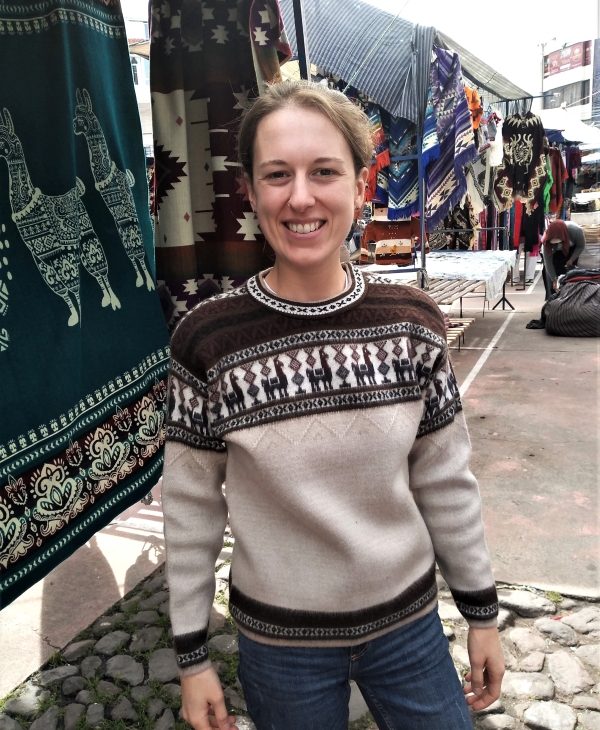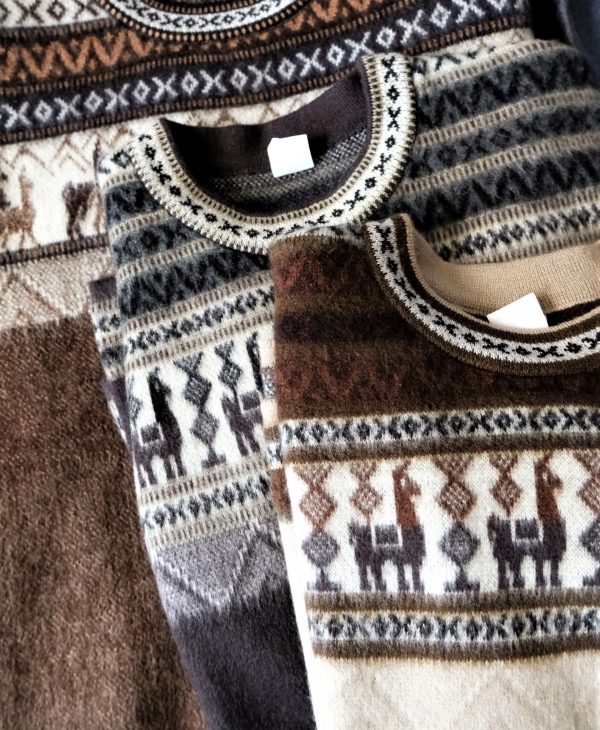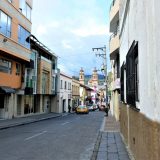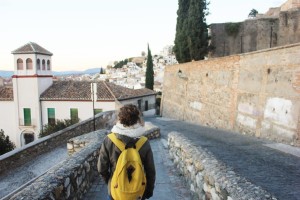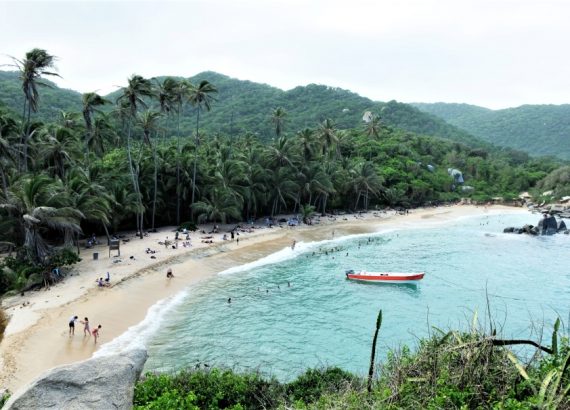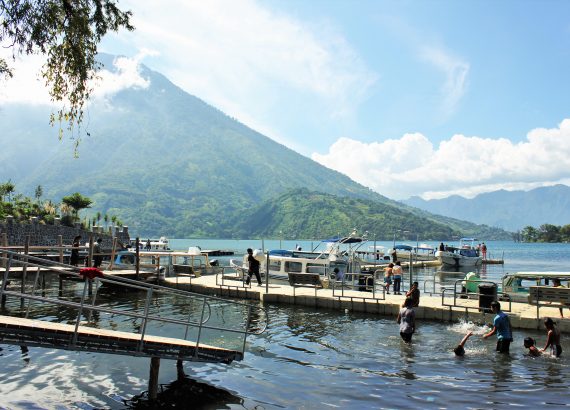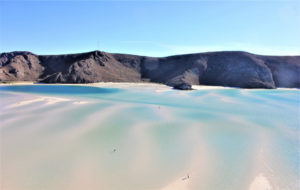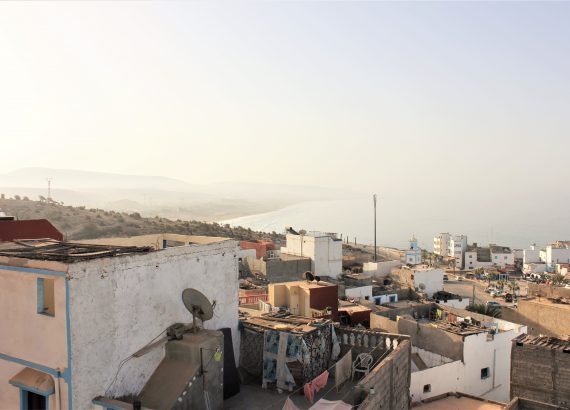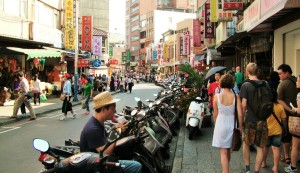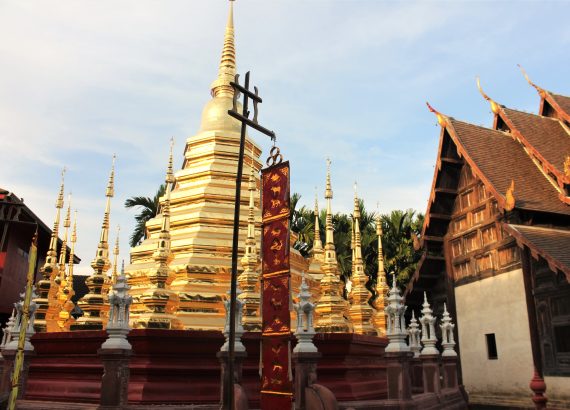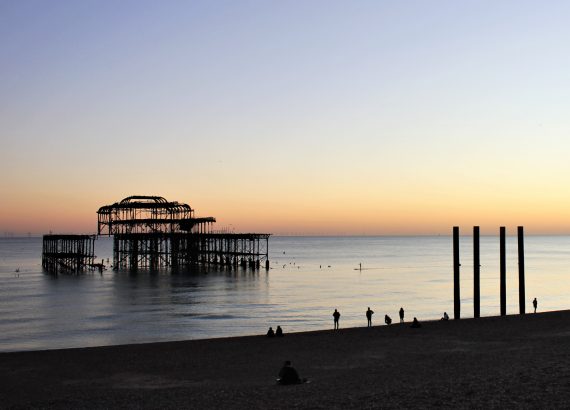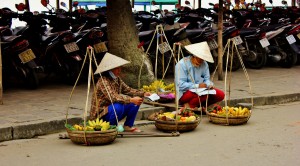A Guide to Otavalo Market in Ecuador

If you’re travelling from Colombia to Ecuador across the Rumichaca border, I highly recommend stopping in Otavalo. We chose to break up our journey from Colombia to Quito with a night in Otavalo where we did our Christmas shopping.
Otavalo is also a popular destination for a day-trip from Quito. It takes around two and a half hours to reach Otavalo from Quito, so if you’re coming for the day then you’ll need to start early. The market starts around 9AM and goes on until the early evening.
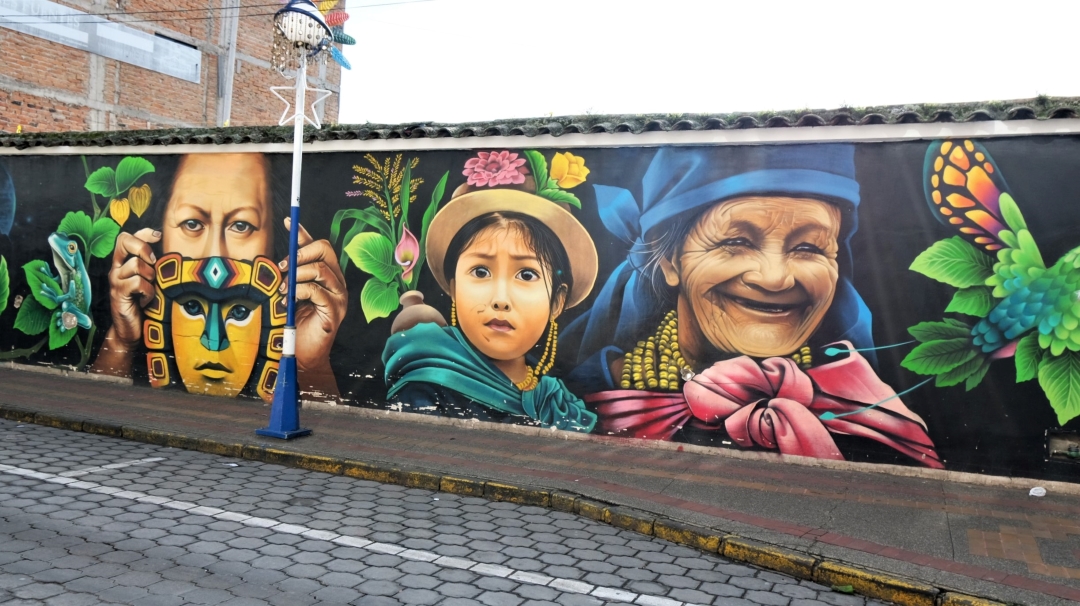
Otavalo Market
Otavalo Market, on the Plaza de Ponchos, is supposedly the largest open-air market in South America. I wasn’t so much impressed by the size as by the quality. It’s a great place to buy beautiful fabrics, including ponchos, jumpers (sweaters) and much more. The market is open every day of the week, but Saturday and Wednesday are the largest days.
How Much Should You Pay for a Poncho at Otavalo Market?
As with markets worldwide, prices are negotiable at Otavalo Market. That being said, I found the Ecuadorians very easy and lovely to barter with. Only once or twice in a whole day were we given ludicrously high prices and most were happy to give discounts and especially if you bought multiple items. Below, we’ve included Otavalo market prices based on what we paid to give you a rough idea of the price per item:
- Ponchos — We paid $15 USD for a small poncho (larger ones could cost up to $35).
- Sweaters — We paid $17.50 per sweater. We bought four sweaters so were able to get a good discount.
- Hats — We paid $12.50 per felt hat (fedoras are commonly worn here!)
- Bags — We paid $1 per coin purse and $2.50 to $5 for larger shoulder bags.

Should I Haggle at Otavalo Market?
Yes! As with all markets, you should negotiate the price you’re given. You can usually get 30-50% off the price, depending how high the trader starts. Remember the two golden rules of haggling: 1) the aim isn’t to get the lowest possible price but to get a fair price that both parties are happy with, and 2) You’ll always do better by laughing and smiling than you will by being aggressive. If you enjoy your interactions, the whole experience will be much more fun. Otavalo market is a friendly one, so be friendly too.
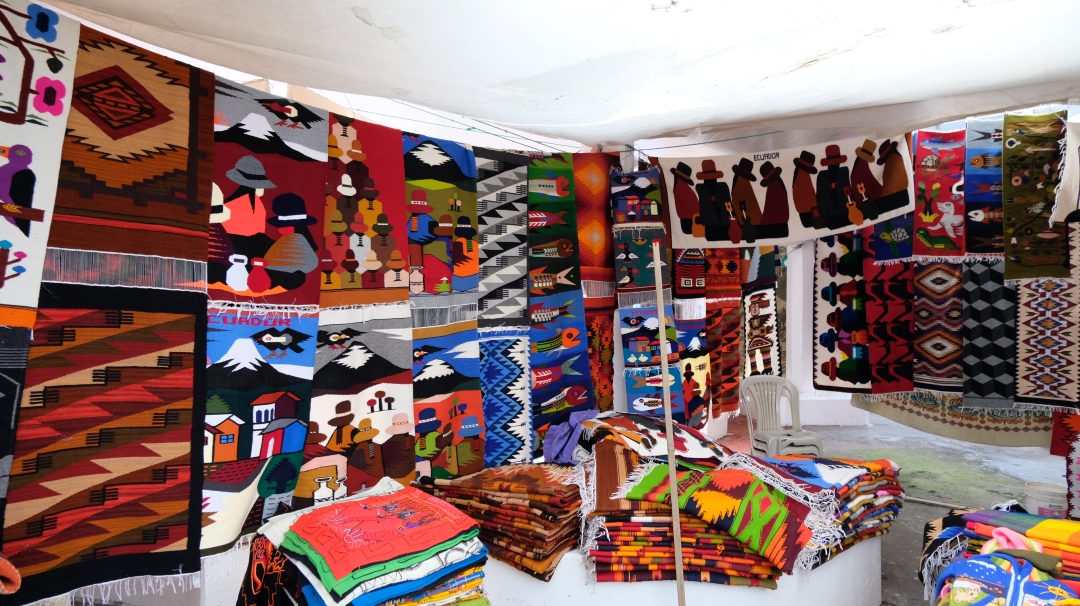
Can You Buy Alpaca Wool Clothing at Otavalo Market?
Ecuador is famous for its textiles made from alpaca wool, which is a wonderfully soft material. That being said, you’re unlikely to get many (if any) genuine alpaca products at Otavalo, despite what it might say on the label. You’re more likely to get textiles made of sheep wool, synthetic fibres or a blend.
Here’s how you can tell a genuine alpaca wool product:
- Genuine alpaca is expensive! If a sweater is less than $100, it’s probably not alpaca.
- Alpaca wool is heavier than sheep’s wool or synthetic fibres.
- Alpaca wool is softer than sheep’s wool, which tends to be itchy.
That being said, I love the products I bought at Otavalo Market. They’re undoubtedly beautiful and well-made, even if they’re not genuine alpaca.
- How cute is Charlie in her new sweater
- Alpaca wool and synthetic blend sweaters
How Much Does it Cost to Post Items from Ecuador?
Buying something at Otavalo is just the beginning. Getting it back home is where the real challenge begins. I must admit, lugging a box of ponchos around Ecuador got really old, really fast and I wish I’d planned it better…
Your best bet is to carry the item back yourself, if possible. This is the cheapest and surest way of getting something home. If possible, come to Ecuador with some room in your bag!
Another option is to use the notoriously unreliable Ecuadorian Postal Service. I paid $120 to send five items of clothing back home to England. I’m not sure if they’ve arrived yet!
A more reliable, but more expensive, option is to use DHL. I went to DHL, but they said it would cost me around $300 to send my parcel! I decided to risk the local postal service instead.
The only other option is to enquire on the Ecuador Mule Forum on Facebook. This is a group of expats living in Ecuador who arrange to transport parcels back and forth when they travel home to the USA, Europe and other places.
Where to Eat and Drink in Otavalo
Best Breakfast in Otavalo: La Cosecha Coffee & Bakery — Just off the Plaza de Ponchos, La Cosecha is a great place to have a healthy breakfast and a strong coffee. Options include a delicious yoghurt with fruit and granola as well as cream cheese bagels. Expect to pay $5-$6 dollars for breakfast, including drinks.
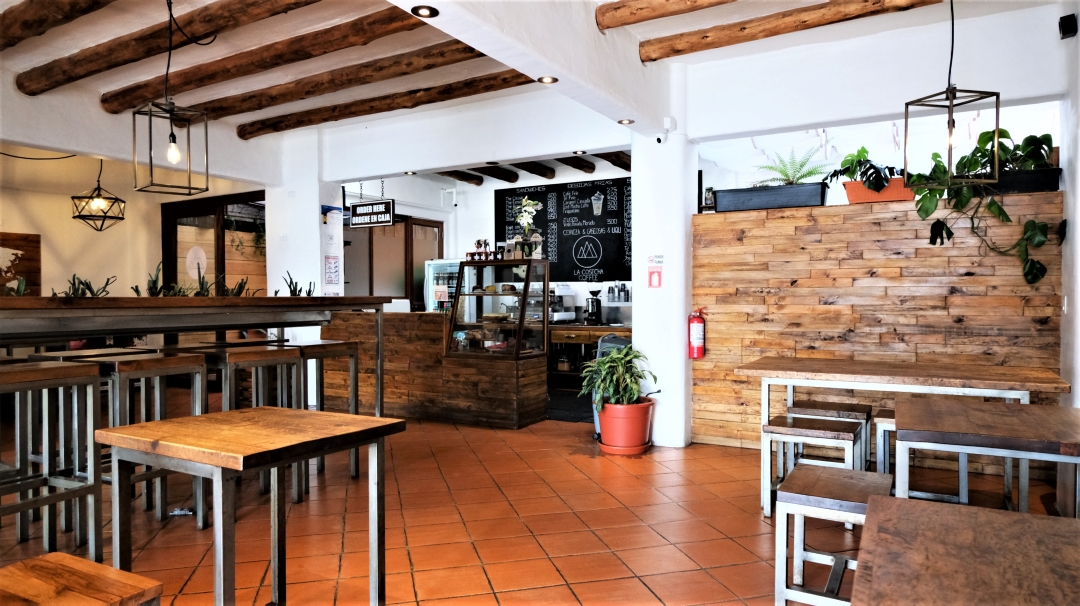

Best Lunch in Otavalo: IncaZen Tea House — A haven for tea lovers, IncaZen Tea House is a relaxing spot away from the bustle of the market. You can try a wide variety of teas, including coca leaf tea (which won’t get you buzzed but is supposed to be good for altitude sickness) and kombucha. They serve small bowls of healthy food and have a good number of vegan and veggie options, such as tofu scramble and broccoli with rice. Roughly $6 per person, including a tea.
Best Bar in Otavalo: Cava Caran — Cava Caran is a cosy bar with plenty of comfortable nooks and crannies. The chips (fries) were excellent and you get a generous portion for $3.50. You can also get a “sampler” which allows you to try five or six of their craft beers. An excellent way to unwind after a long journey or day at the market.
Where To Stay: Otavalo Hostels and Hotels
Aylluwasi Hostel — This very well-kept hostel is a converted colonial style house with only a few rooms. It’s right in between the Plaza de Ponchos and Otavalo bus terminal, making it a convenient location for a weekend traveller. We had a comfortable, spacious room and our bed was layered with blankets to keep us warm at night. Good value for money.

Hotel Otavalo — If you’re looking to splurge, then we eyed up this luxurious hotel in a traditional brick building. Unfortunately it was out of our price range but my gosh it looks nice. If you stay there, let us know how it is!
Getting To and From Otavalo
Getting to Otavalo from Colombia — If you’re coming from Colombia, you’ll have to cross the border at Rumichaca. Once you are on the Ecuadorian side of the border, you’ll see a number of shuttle buses and taxis. They’re all going to Tulcan, which is where you can change for Otavalo. At Tulcan there are plenty of buses going to Otavalo. The bus from Tulcan to Otavalo took about three hours and cost around $3 US dollars. We were dropped somewhat unceremoniously outside Otavalo centre on the highway, but it was only a 15-minute walk to our hostel.
Getting to Otavalo from Quito — Catch a bus to Otavalo from the Carcelén bus terminal in Quito. A bus ticket costs $2.50 and will take two and a half hours to reach Otavalo. It’s possible to see Otavalo for a day-trip from Quito if you start early.
Getting to Quito from Otavalo — Buses run frequently to Quito from Otavalo. A bus ticket is $2.50. The journey takes about two and a half hours. Note that the main bus station in Quito is a little way from Quito’s old town, so expect to pay another $10 to get a taxi to your hostel if you are staying in the old town.
